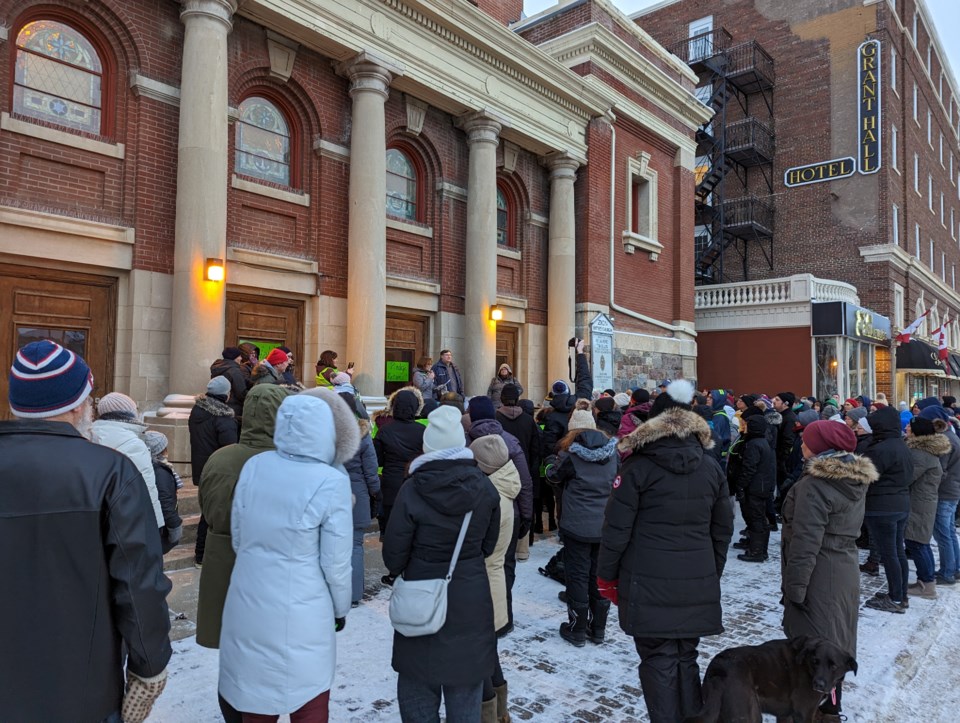Dr. Isobel Findlay is co-director of the Community-University Institute for Social Research (CUISR) at the University of Saskatchewan, and lent her time recently to help Square One Community, Inc. prepare for Moose Jaw’s first Point-in-Time (PiT) count.
Square One is a community-based non-profit organization that is working to reduce the number of individuals in Moose Jaw experiencing homelessness. One of their most important goals is to have reliable, timely data — and that means a PiT count.
“I did my first PiT count as a volunteer in 2008. I was already a researcher at (CUISR), where I am now the university co-director,” Findlay explained in an interview with MooseJawToday.com.
“I learned a lot … Since then, in 2012 I became the lead researcher on our homeless counts, and I’ve done 2012, 2015, 2018, and 2022. And simultaneously, I do housing research, because in order to have any answers to homelessness, you not only need to study those experiencing it, and listen to their concerns and issues and needs, but you also need to look at the housing sector.”
Point-in-Time counts have been federally regulated and nationally standardized since 2016, Findlay said. If conducted correctly, they can provide crucial information on, for, and from people experiencing various forms of homelessness.
PiT counts can also provide vital context for individuals on the streets — How many are fleeing relationship violence? How many have intergenerational traumas in their past, such as Indigenous survivors of residential schools? How many have children, are potentially employable, live with disabilities? What effect do changes in government policy, economic fluctuations, increases in population, and/or housing availability have?
Counts provide public awareness and move the conversation forward. This count, with Findlay’s help, will include a community survey portion that anyone can provide answers for, giving Square One a snapshot of the community’s understanding. PiT counts can help co-ordinate between agencies, increase access to services and resources, and secure sustainable funding through grants, which often require hard data for eligibility.
“You can’t do a (PiT count) without a community supporting you. You need literally hundreds of volunteers,” Findlay said. “We’ve had up to 150 volunteers in Saskatoon, but you can imagine what they need in Vancouver, Toronto, or Montreal.
“But the volunteers also need to be trained carefully so the data quality can be assured. So, they need to understand lived expertise as well as academic expertise. … In Saskatoon, the city and the university are involved in every PiT count, so you have academic experts, lots of support, and the history of doing them. I was very glad to help when Moose Jaw reached out, because I know it can be quite overwhelming, even with the national co-ordination standards.”
Findlay said that Saskatoon’s numbers have gone up every time the count has been conducted. While part of that is the improvement in research methods over time, she said there’s no doubt the problem is getting worse. Especially after COVID-19, homelessness is more visible than ever.
“Every Point-in-Time count underestimates the problem,” she confirmed. “None of us have the resources to do a fully exhaustive count in every area of every city. … I don’t want to underestimate the impact of strategies like Housing First, they have been immensely successful in some communities.
“So, yes, there are all sort of efforts and plans to end homelessness, but the larger structural factors, such as racism, social exclusion, marginalization, and system failures, I mean, we still have people transitioning out of the justice system with nowhere to go, out of the health system with nowhere to go. These are big issues that we are still not addressing as effectively as we could.”
To be part of Square One’s PiT count on Aug. 26, contact co-ordinator Desiree LaLonde at [email protected], or by phone at 306-630-2702.
A comprehensive guide to PiT Counts is available from homelesshub.ca/solutions/monitoring-progress/point-time-counts.




